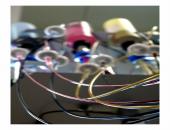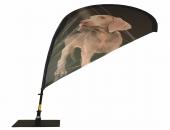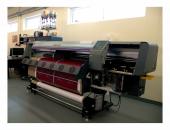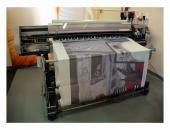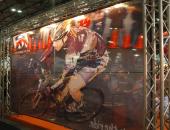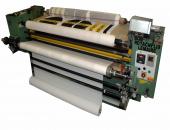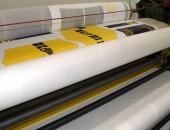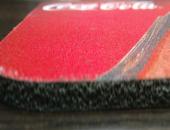Digital Sublimation, Dye-Sublimation Printing
This is a highly specific method for dyeing material, and involves the following successive steps:
- Printing plotters use sublimation dyes in their liquid state as inks, thus creating the required print.
- After printing, the inks dry and turn solid. In this form their colour is still not final, which complicates quality control at this stage.
- The final colours are reached in the hot press, where the dyes turn from the solid directly into a gaseous state without passing through a liquid stage. This is achieved at temperatures of close to 200 °C; the pressure in the press ensures penetration and bonding of the dyes with the very structure of the material.

Printed materials
Polyester, most typically as woven or knit fabric; however, printing is also done on solid, non-absorbent materials provided with a polyester varnish, such as ceramics, metal sheets, metal accessories, etc.
Polyamide is the economical option, and printability depends on the melting point of the material concerned.
Types of digital sublimation
- Indirect sublimation uses sublimation paper as the medium between the printing plotter and the material being printed; the print is created on the paper, which is then inserted into the hot press together with the material to be printed on. In this process, most of the dye remains on the surface of the material, making the print richer and sharper than in the case described below.
- Direct printing is suitable for products in which we require the print to penetrate all the way to the reverse side. The liquid ink applied directly to the fabric penetrates the material and reaches the reverse side, depending on the thickness of the material. We mainly use this technique for printing flags.
Typical products:
- Team jerseys
- Lanyards
- Pop-up tents
- Pillows
- Sun umbrellas
- Textile banners and posters
- Table cloths
- Flags





